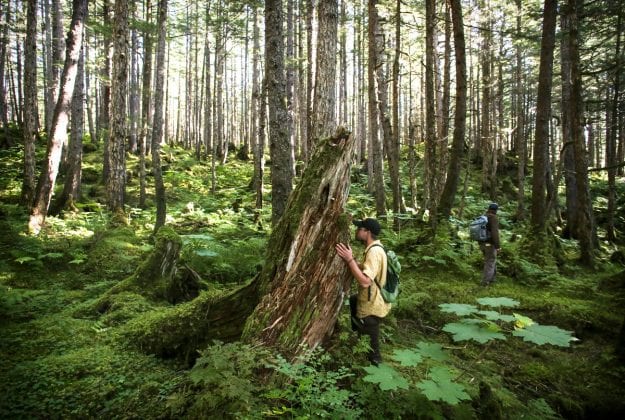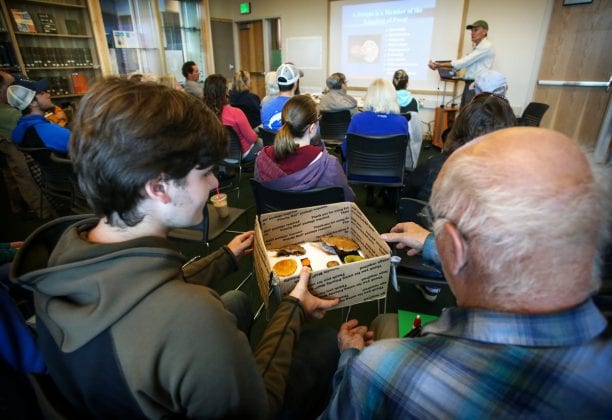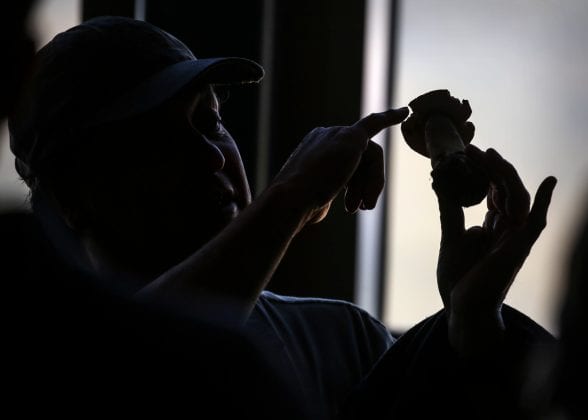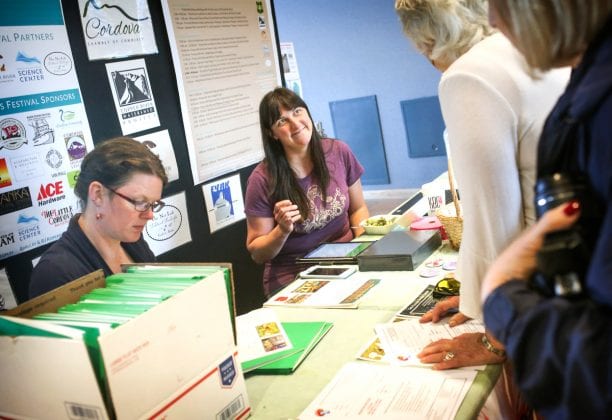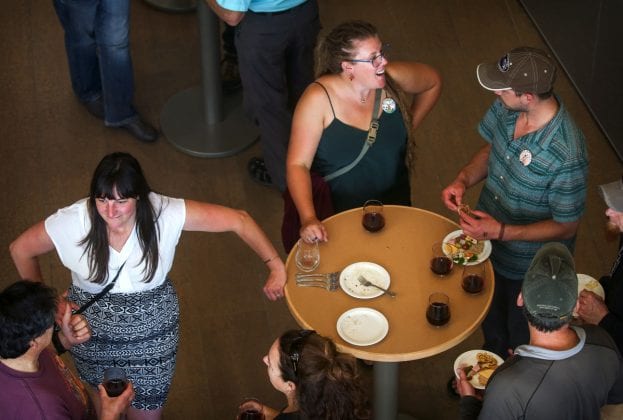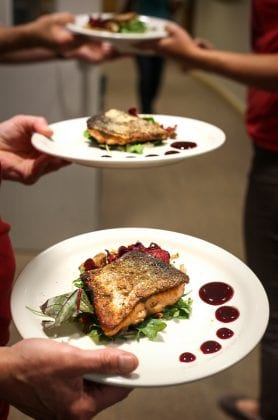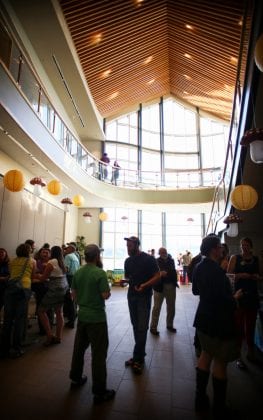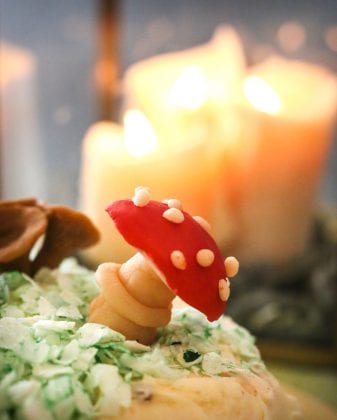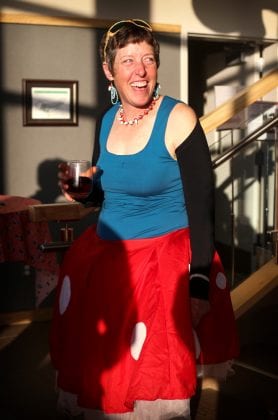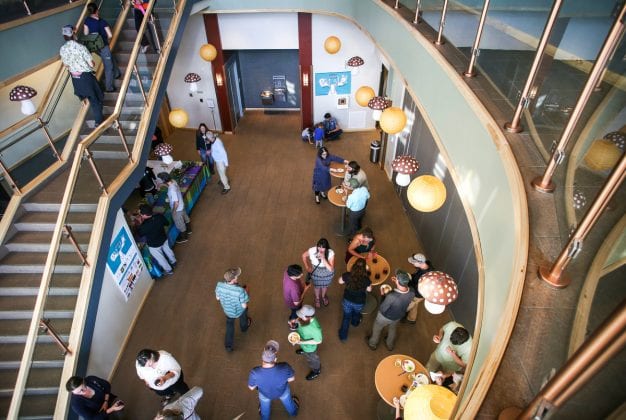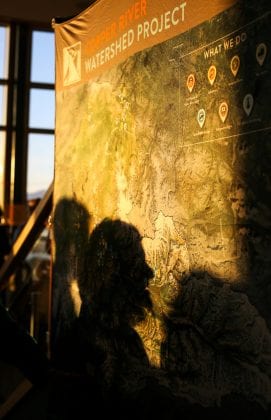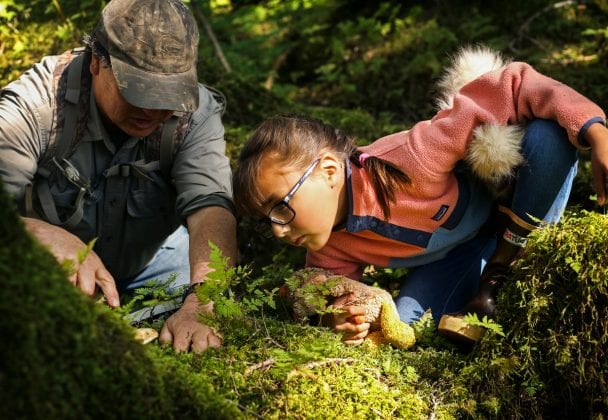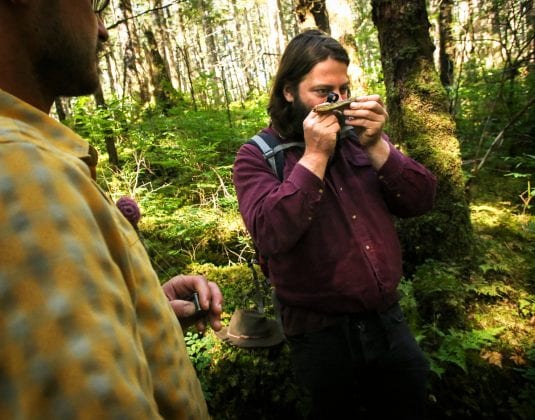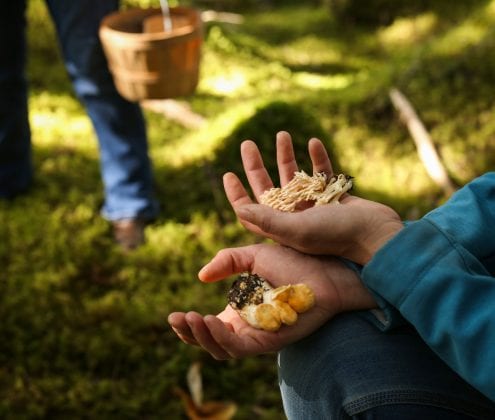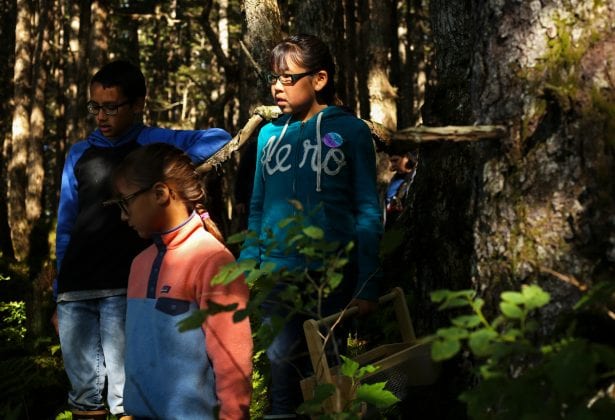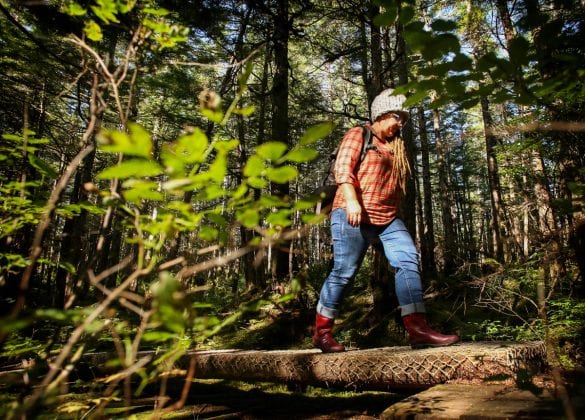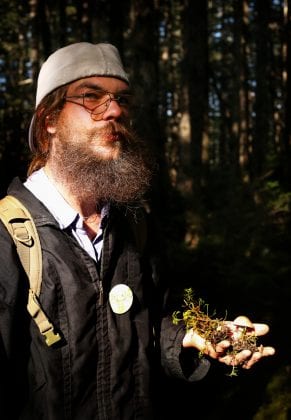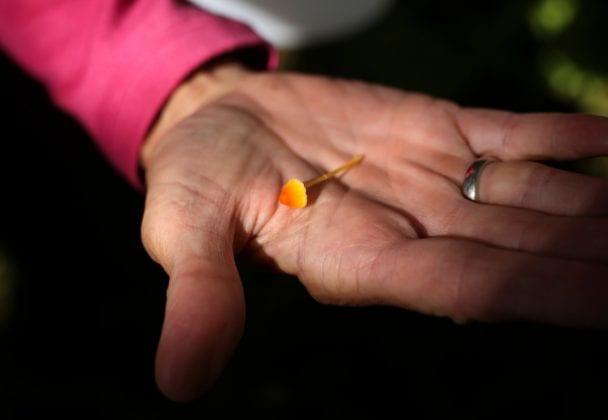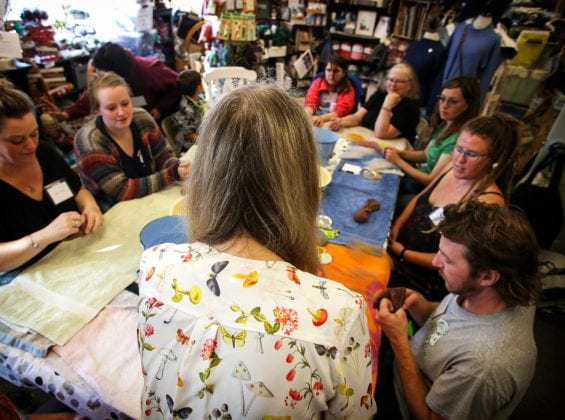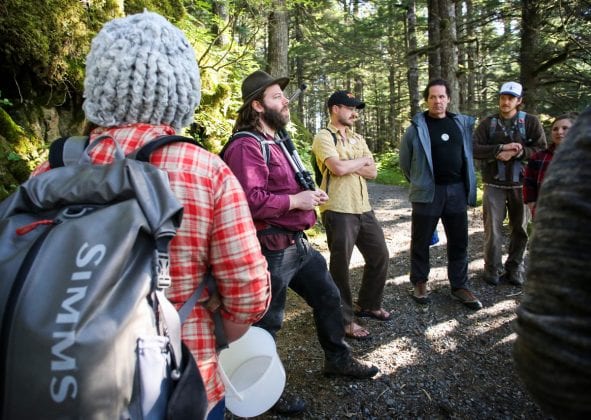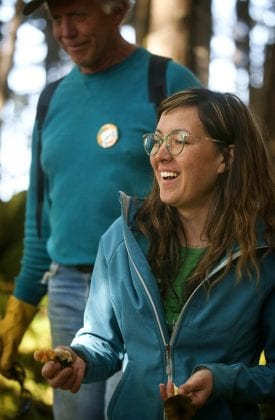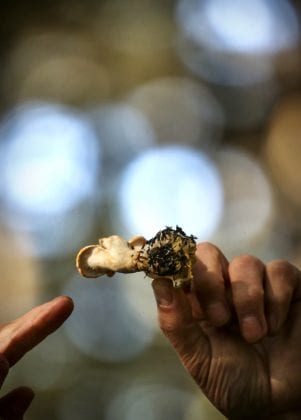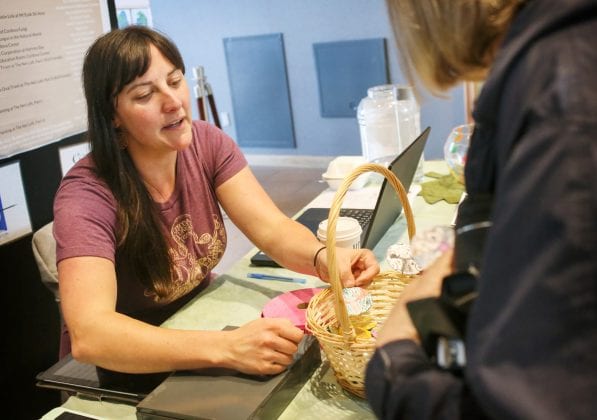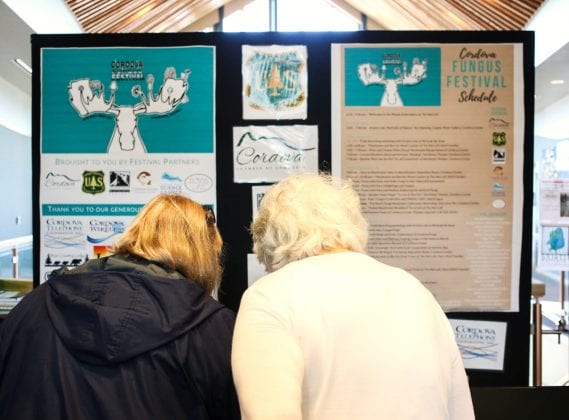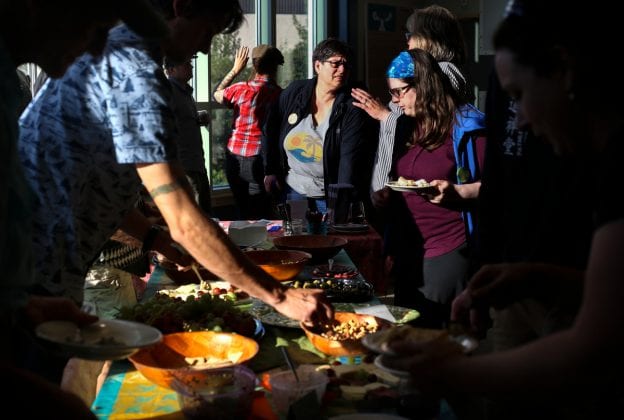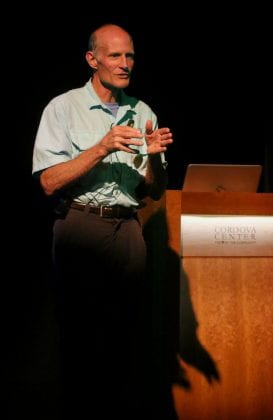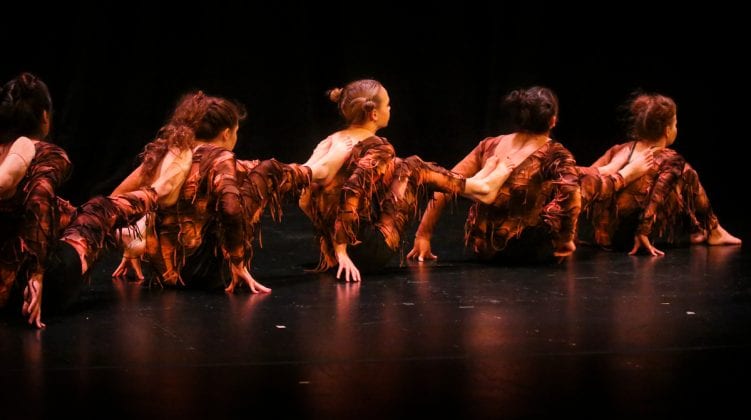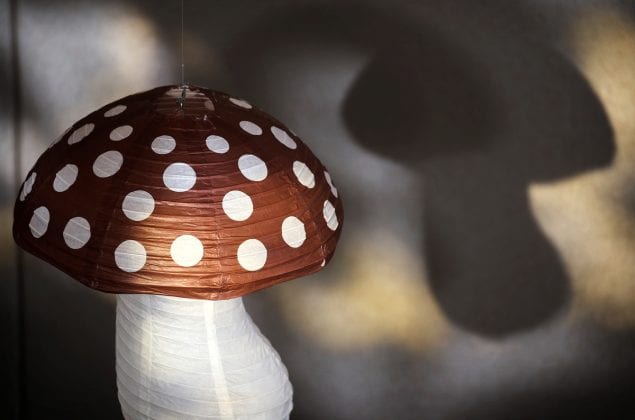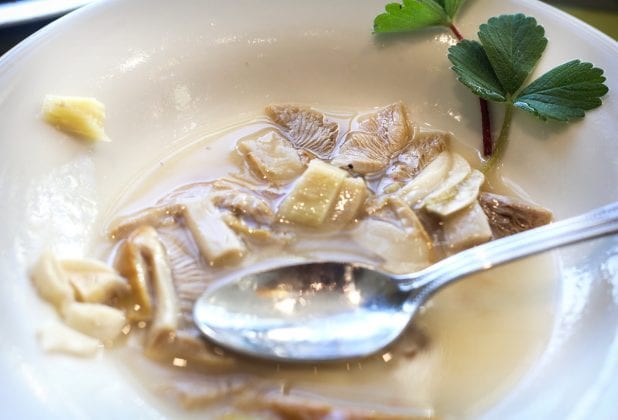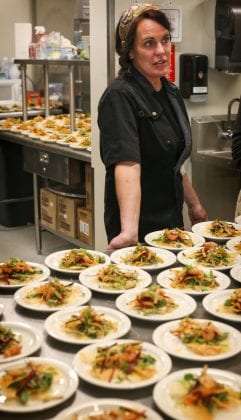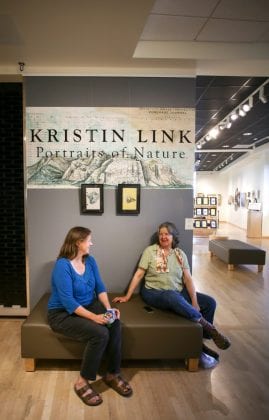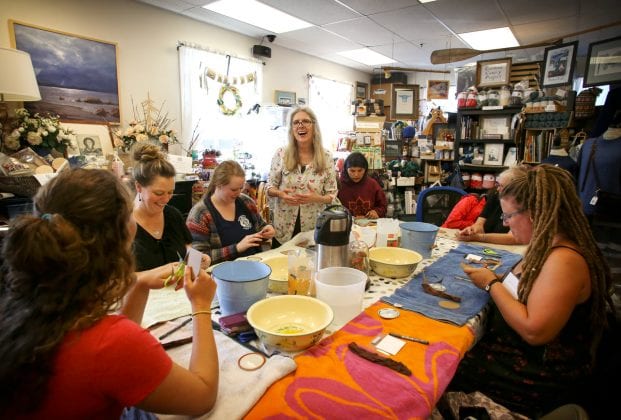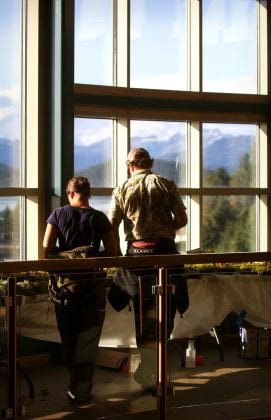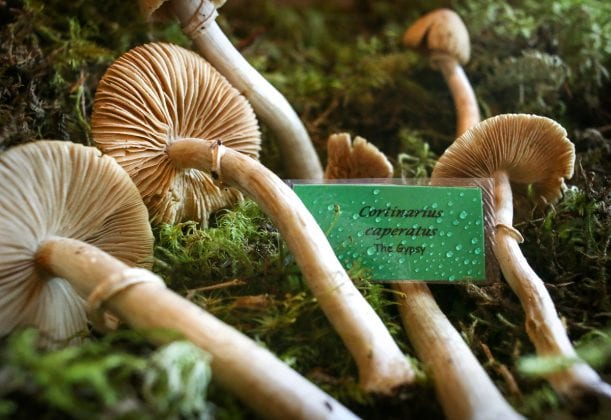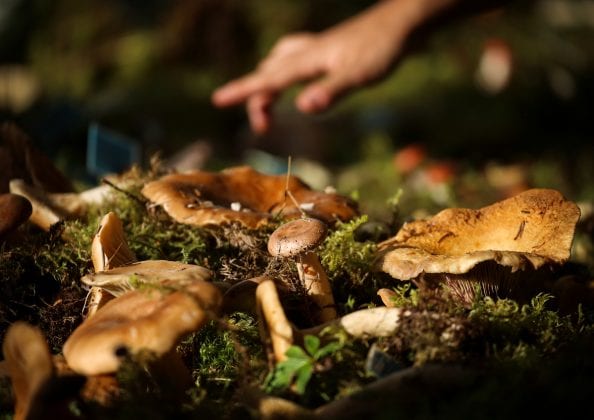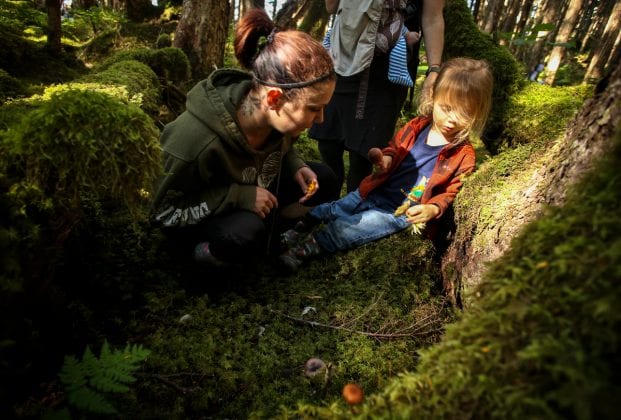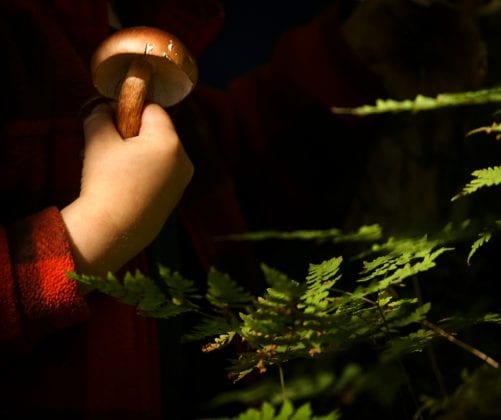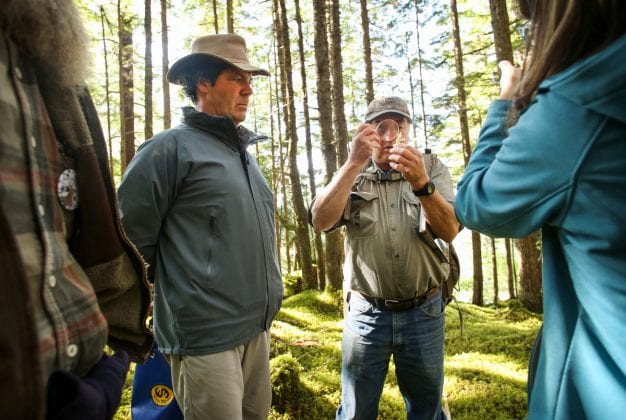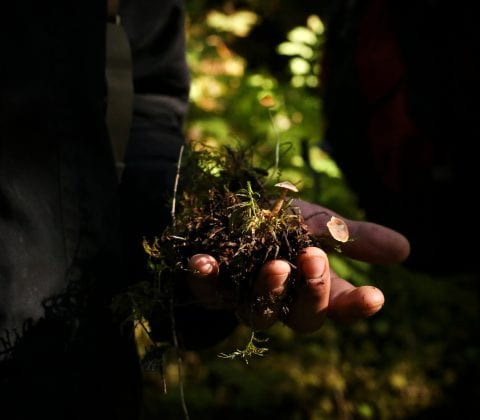Beautiful weather, energetic mycologists and mouthwatering mushroom dishes created the perfect palette for the Cordova Fungus Festival this past weekend.
People of all ages ventured out the road and into the Chugach National Forest for guided mushroom foraging and learned species from mycologists, people who study fungi.
The first day of the festival kicked off on Aug. 31 with artist workshops, the Great Mushroom Recipe Swap, a wine and cheese mixer and a dance performance by North Star Dance Co. at the Cordova Center.
The orange glow of the setting sun highlighted serving bowls now emptied of a variety of savory and sweet mushrooms served as soup, and some pickled, marinated and sautéed.
Upstairs, near the registration booth, a display table of moss and mushrooms lined the back windows. As opening day ended, people watered the mushrooms, stopping to partake in a brief water fight, and eventually returned to the fungi.
Fungus Festival attendee Rodney Moll, of San Diego, talked with mycologist Rick Van De Poll, then walked away wide-eyed, saying “A lot to learn this week. Fascinating!”
“We would not be here without fungi. It’s pretty simple,” Van De Poll said during his speech. “Salmon would not be here without fungi. And as much as we spend a lot of time thinking about keystone species like salmon or brown bear … the fungi are kinda running the show.
“…I walked through tons of dead fish way away from the streams when I went up Heaney Ridge last year and that was again an eye opener at how much of a connection there is,” he said, explaining that salmon are recycled and replenished into the root zone by fungi. “…mushrooms, we’re still figuring it out and that to me is the mystery.”
Van De Poll has recorded more than 1,300 mushrooms in New Hampshire, including undescribed species.
His favorite Alaskan mushroom is the Alloclavaria Purpurea, also known as the purple club coral.
“It is truly a remarkable mushroom that epitomizes the diversity of shape and color one can find in fungi,” he said. “It’s also a classic Alaskan species of the north temperate coast.”
The unknown is what drew Van De Poll to the field of mycology.
“…I was working at the Monadnock State Park in New Hampshire in 1977 when, during the busiest season in the fall, we had several inches of rain every weekend,” he said. “Instead of thousands of people, I entertained thousands of fungi!”
He found an old book on fungi and did his best to sort them. He ate one, without any coaching or guidance, and got severely sick. It was then that he realized he needed to know more.
“I started taking classes and got hooked,” he said. “By the time I was out of graduate school … I was ready to start teaching mycology.”
Van De Poll has been teaching for more than 30 years and was trained by Harry Thiers, a well-known American mycologist.
“We have some good work being done in terms of understanding what our fishing stocks are … we have a pretty good sense of how many species of macro fungi are in a given area,” Van De Poll said. “This kind of festival is adding to that knowledge base. You guys that are going out and picking the mushrooms are adding to that knowledge base.”
Mushroom hunts
Moll came to the festival to learn about new food sources that he can collect and eat while he visits southcentral and southeast Alaska.
Montana residents Jessica and Tyson Stillman attended numerous festival events including mushroom hunts as well as The Net Loft’s crafting classes.
“I really adored it, and her (Dotty Widmann), and everything The Net Loft is in the community,” Jessica Stillman said.
For New Zealand visitor Emma Woods, the festival offered insight into fungi and foraging, an activity she hopes to pursue at home.
Brad Blickenstaff took the guided tour led by Kate Mohatt, Prince William Sound zone ecologist for the U.S. Forest Service, and photographer and mycologist Noah Siegel.
Blickenstaff, a professional forager and volunteer teacher of mycology, said he plans to enroll at the University of Alaska Fairbanks for a graduate degree in mycology.
“I am truly shocked and impressed on the variety of mushrooms in Alaska,” he said.
Blickenstaff came to the festival after searching online for organized mycological societies within the state, prior to his move from Oregon.
Cordovan Ken Hodges also led a mushroom hunt, “Hedgehogs & Hodges with Ken”, where he identified edible mushrooms, a main fungal interest of his along with testing their culinary properties.
Moss-covered decaying logs lay in every direction of the forest floor; yet Hodges bounced effortlessly from group to group answering questions and identifying mushrooms.
